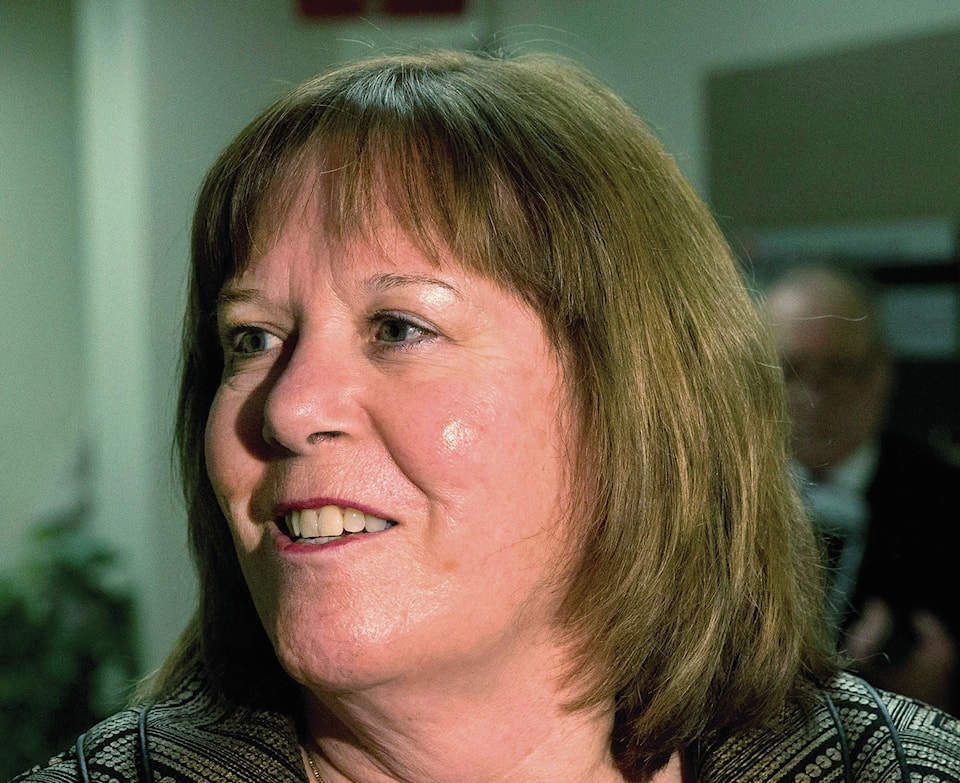EDMONTON — Alberta is changing how it produces and pays for electricity as it enters a new era of greener energy sources.
Energy Minister Marg McCuaig-Boyd announced Wednesday the province is moving away from electricity deregulation, which ties investment to volatile swings in spot prices.
It has been in place in Alberta for two decades.
“The system must deliver affordable, stable prices and reliable energy,” McCuaig-Boyd said.
“(Alberta’s) current electricity market is an outlier among North American jurisdictions.
“This built-in volatility isn’t enough to make sure there’s incentive to build and pay for the necessary infrastructure to power Alberta’s future.”
McCuaig-Boyd said officials will now begin creating the framework, expected to be ready in 2021, for a new system known as a capacity market.
In the new system power producers will be paid for spot prices, as before.
But now they will also get contracts to build up capacity — even if it isn’t all needed.
The plan is to ensure there is always enough electricity in reserve to offset any potential shortages as Alberta moves to replace coal-fired electricity with a mix of natural gas-fired power along with renewables like wind and solar.
The province estimates it will need up to $25 billion in new investment in electricity generation to support this shift.
The new approach carries a risk that ratepayers will have to pay more for excess capacity, but it is expected to reduce market volatility.
McCuaig-Boyd said prices will remain affordable.
On Tuesday, Premier Rachel Notley announced that prices will soon be capped at 6.8 cents per kilowatt hour through to 2021 to protect homeowners from any price spikes during the transition.
Alberta’s power prices are currently about half that 6.8 cent rate, but have spiked much higher over the past decade.
If they go over 6.8 cents, power producers would be compensated.
Don MacIntyre, energy critic for the Opposition Wildrose party, called the changes unnecessary, and said all risk will ultimately be transferred from power producers to consumers.
“Today’s announcement puts the burden entirely on electricity consumers and taxpayers,” said MacIntyre.
“Make no mistake — this feels a lot like Ontario.”
In Ontario, electricity rates for homes and small businesses jumped an estimated 70 per cent between 2006 and 2014 as coal was being phased out.
Progressive Conservative energy critic Rick Fraser said he is cautiously optimistic the new market will work.
But he said it’s a decision driven by the Notley government’s desire to extricate itself from problems it created by rushing through major changes to the economy with its climate change plan.
“It’s a little bit of back-pedalling on the government’s part,” said Fraser.
The climate change plan includes the launch of a broad-based carbon tax on Jan. 1, hiking fees at the gas pumps and on home heating bills.
Power producers who stood with McCuaig-Boyd at the news conference lauded the new plan and its timelines. The auction for power capacity contracts is not expected to begin until 2024.
“It is a very complex market,” said Brian Vaasjo, president of Capital Power. “We’re very pleased that the government is taking the time to do it right.”
Dawn Farrell, president of TransAlta, said the decision is necessary.
“As the province moves towards more renewables in the system, it will require capacity to back those renewables up,” said Farrell.
On Thursday, the government is to release a report by retired U.S.-based power executive Terry Boston on how to transition Alberta out of coal-fired electricity by 2030.
